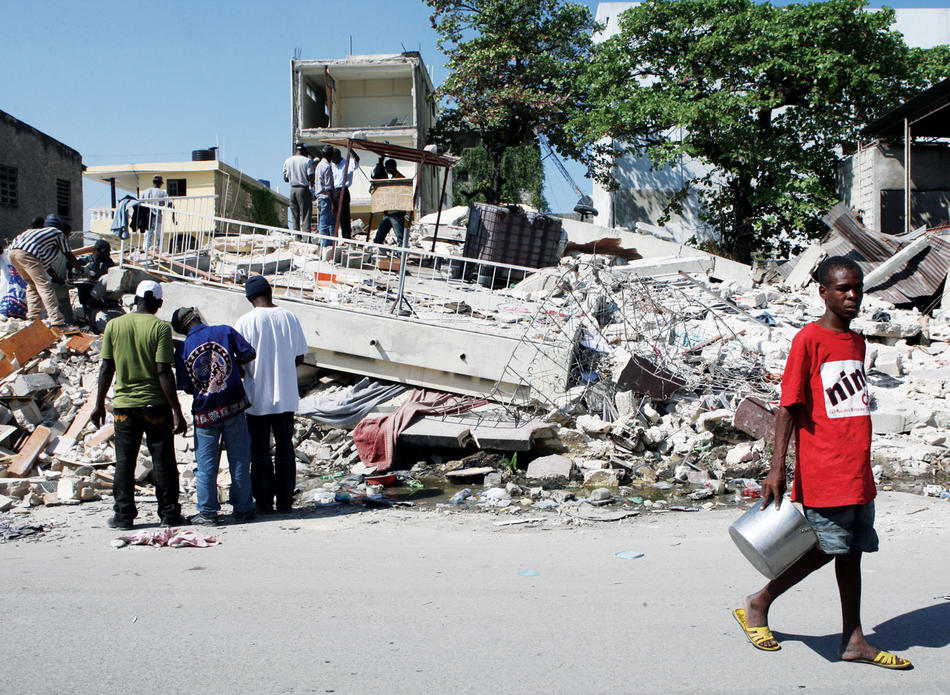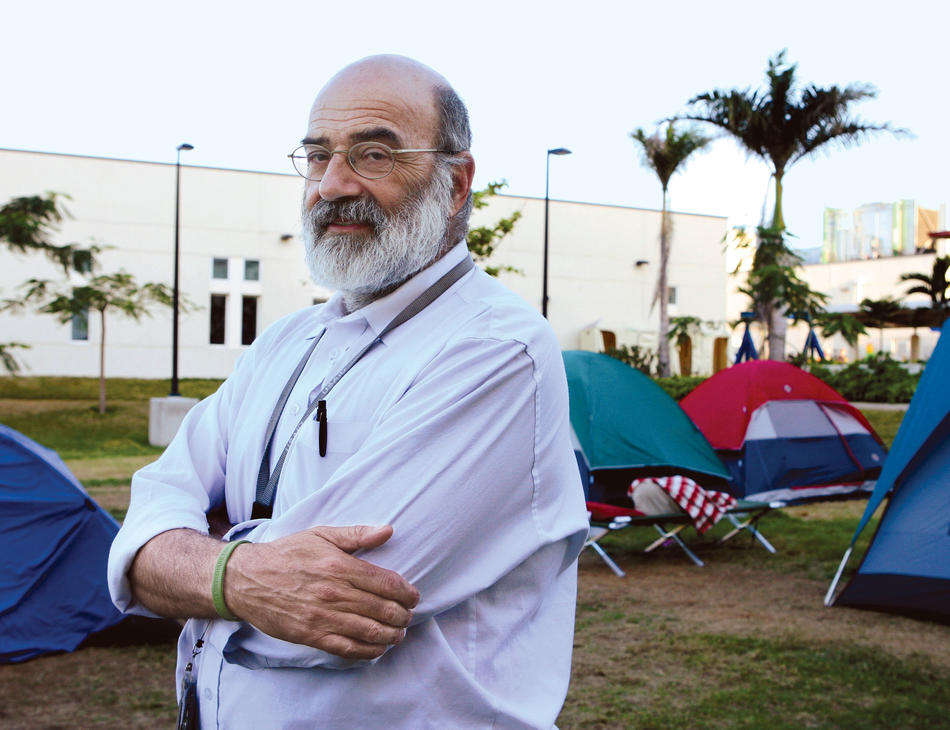It was Mary Choi’s third day in Haiti, and the throngs of frail and battered people outside of her medical tent continued to swell. A listless infant wrapped in cotton lay in her arms. The baby girl’s extreme dehydration had caused her veins to shrink into threads, too fragile to take an IV needle.
Choi, a physician studying at Columbia’s Mailman School of Public Health, poured a trickle of fluid into the girl’s mouth, but she wouldn’t swallow. Choi tried again, this time delicately pinching shut the infant’s nostrils. It worked.
For two hours, Choi sat on a wooden chair, in the 100-degree heat, giving sips to the baby. Finally, their ride came and took them to a Swiss pediatric tent an hour away. During the drive, Choi sat in the backseat, determined to revive the infant. As they arrived, the baby let out a cry. It was a beautiful sound, signaling that she would live.
“There are so many people dying there that you start to wonder, ‘What exactly am I accomplishing?’” says Choi, an international emergency medicine fellow at Mailman, who arrived in Haiti five days after the January 12 earthquake and stayed for nearly two weeks. “But you have to tell yourself you can’t save everyone, and the lives you save have to be enough.”
As American news crews leave Haiti, taking the spotlight off that country’s humanitarian crisis, faculty and students from across the University are contributing to Haiti’s relief and reconstruction. For example, about a dozen nurses and physicians from Columbia are there working long hours, treating everyone they can. Both the School of Nursing and the College of Physicians and Surgeons have a rotation list of clinicians committed to practicing in Haiti at least until the fall. Meanwhile, several Columbia public-health specialists are advising relief agencies.
Robert S. Chen, a senior research scientist who directs the University’s Center for International Earth Science Information Network (CIESIN), is co-chair of the University’s recently created Haiti Task Force, a group of non-medical faculty who meet every Friday to discuss how their programs can contribute to relief efforts. “There are Columbia experts in agricultural development, energy, disaster, risk management, urban planning, ecological restoration, conflict resolution, and climate forecasting involved in relief efforts,” he says. “We want to provide integrated thinking about what’s needed. We want to make sure what we’re doing on the ground is coordinated.”
Lessons from the past
Ronald Waldman, an epidemiologist and Mailman professor, was in Port-au-Prince for six weeks following the disaster, serving as the U.S. government coordinator of medical and health-sector response. A physician specializing in child health in developing countries, Waldman has worked in complex emergencies in Somalia, Rwanda, Bosnia, Albania, Democratic Republic of Congo, Afghanistan, and, most recently, Iraq. “I have seen a lot of disasters, but the destruction of this city is unfathomable,” Waldman said days after the quake. “We teach about direct and indirect consequences of disasters and about how they should be approached sequentially, but here they have to be addressed simultaneously.”
While several faculty are serving on the ground in Haiti, others are mapping out long-term recovery plans from New York. Neil Boothby, with more than 20 years’ experience working with children in crises, has been advising the U.S. government and UNICEF on child protection issues in Haiti. Boothby is the Allan Rosenfield Professor of Clinical Forced Migration and Health at Mailman and director of the school’s Program on Forced Migration and Health. He knows firsthand the mistakes and successes that can occur in crisis response: He wrote UNICEF’s postprogram review of the 2004 Asian tsunami relief effort. “We have to ensure that lessons from the tsunami be integrated into the Haiti response,” says Boothby. “Today, and before the earthquake in Haiti, too many people died because of poor water and sanitation and lack of immunization. We need to help Haiti build public health structures that support a continuum of health, from the home to the clinic to the hospital.”
Marc Levy, the deputy director of CIESIN, is among several Columbia faculty members who have long-standing research projects in Haiti and who are now adapting their work to help the country rebuild. When the earthquake hit, Levy was in Haiti with CIESIN colleague Alex Fischer. “The shaking seemed to go on forever,” he says. Levy directs the Haiti Regeneration Initiative, a partnership between the Earth Institute and the United Nations Environment Program (UNEP) to restore damaged ecosystems in the country. Levy and his team successfully mapped the watershed surrounding Port-au-Prince. They tested soil to see what nutrients it needed, identified deforested areas prone to landslides, and compiled historical rainfall statistics.
Levy’s goal is to determine which crops will grow best in the area and how to provide clean drinking water to the region’s 2.9 million people. “It’s an ecological focus,” Levy says. “Before the earthquake, two-thirds of the country’s population lived in rural areas with high levels of poverty and a vulnerable landscape.”
Levy and Fischer are now back in United States, but they’ll return to Haiti in a few months to assess where the earthquake has disturbed soils and hillsides, increasing the chances of dangerous landslides. “The idea is to get people to grow crops in areas most suitable,” he says, “and get trees planted in places most needed.”
Ayiti tomorrow
Other researchers from Columbia’s Earth Institute have been in Haiti for about two years creating a comprehensive plan to lift the Caribbean nation out of poverty. Their work is part of the UN Development Program’s Millennium Villages Project, which was developed by Earth Institute director Jeffrey Sachs.
Tatiana Wah, an expert on the economic development in poor countries, oversees the Earth Institute’s work in Haiti, which involves reducing poverty, hunger, disease, illiteracy, environmental degradation, and discrimination against women. Speaking from Port-au-Prince a month after the earthquake, Wah said, “Now we have to deal not just with development, but with the most basic services.” She said construction, recovery, and development must be integrated so that transitions are smooth. “The city has to be completely rebuilt.”
Ultimately, public health experts at Columbia hope that international relief efforts will help Haitians make long-term improvements to their lives. Similarly, Indonesia was able to capitalize on international aid in order to build public health infrastructures that are better than before the 2004 tsunami, according to Boothby.
“Mistakes were made in Aceh, Indonesia,” he says. “But today Aceh is a better place to live. I hope we can say the same for Haiti some years from now.”





